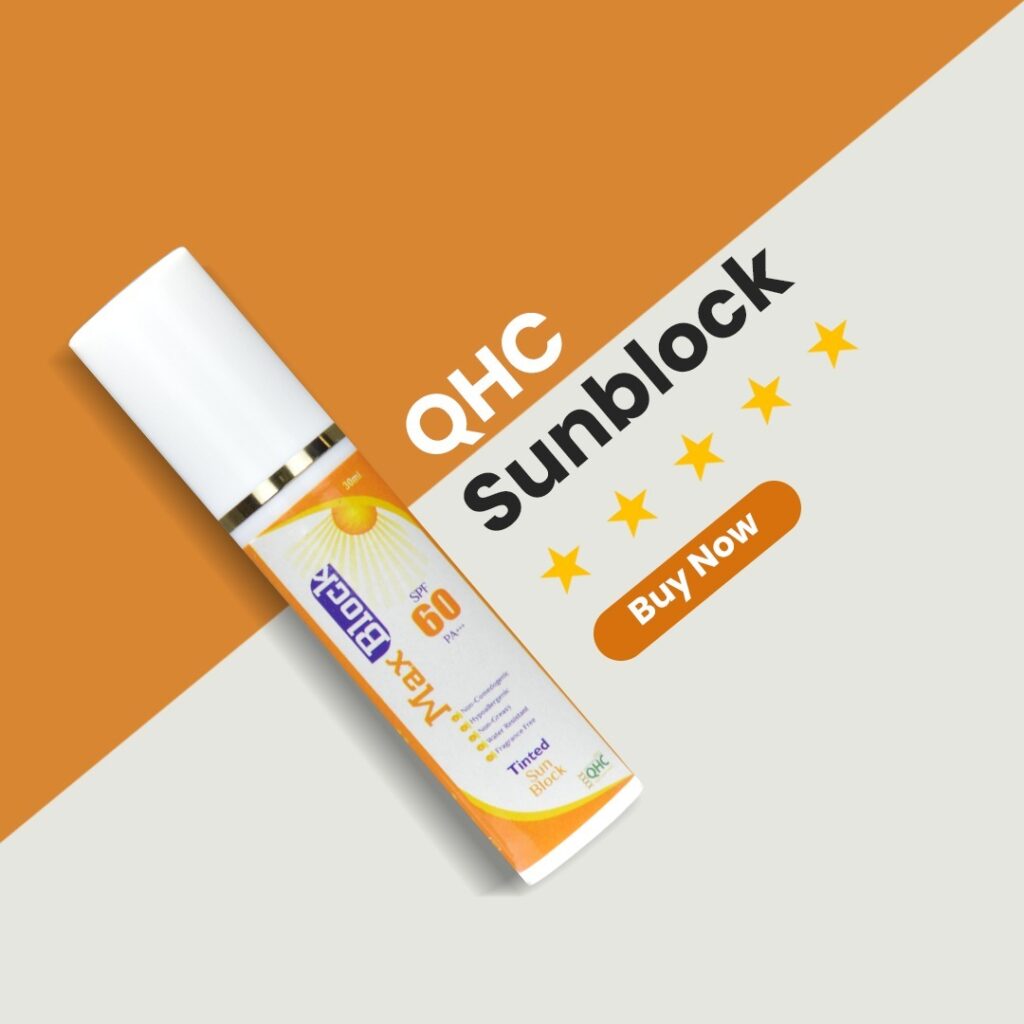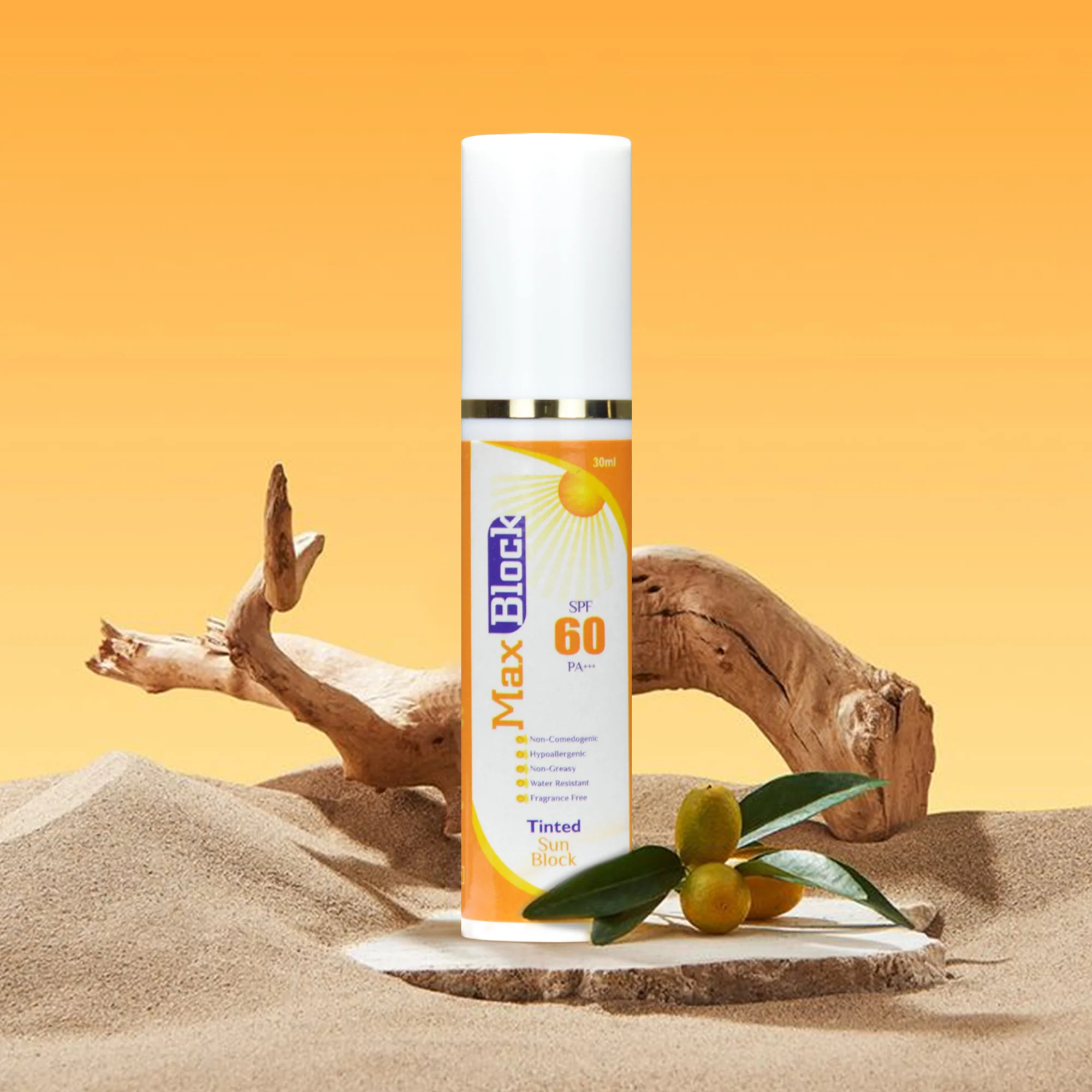What’s causing early pigmentation despite daily sunblock?
In Pakistan’s urban cities, young adults apply sunscreen every morning.
But despite daily use, tanning and pigmentation are on the rise.
That’s because most sunblocks aren’t built for our harsh climate.
Rising UV index and pollution levels damage the skin deeply.
Regular formulas can’t fight smog, sweat, and constant exposure.
That’s why people need the best sunblock in Pakistan with stronger protection.

How does the UV index affect your skin daily?
Pakistan’s UV index now remains high throughout the year.
Especially in cities like Lahore and Karachi, it often crosses 9+.
Even 15 minutes of exposure can start skin darkening.
High UV weakens the skin’s natural barrier.
It activates deeper skin cells and worsens uneven pigmentation.
If your sunscreen isn’t broad-spectrum, it won’t block this.
Why is pollution making sun damage worse?
Pollution particles sit on your skin all day long.
They mix with sweat and oils, clogging your pores.
This makes sunblock break down faster than expected.
Smog contains harmful free radicals.
They enter the skin and trigger inflammation and spots.
Ordinary sunscreens don’t protect against this hidden danger.
Are you applying your sunscreen the right way?
Many people underestimate how much sunscreen is needed for full protection.
A pea-sized amount isn’t enough for full coverage.
You need at least two fingers’ worth for your face alone.
People often forget that sunscreen must be reapplied every few hours.
Sweat, touching your face, or rain can wipe it off.
Without reapplication, you’re left unprotected for hours.
What does SPF actually protect you from?
SPF only measures protection from UVB rays.
These rays mainly cause visible burns but not deeper skin tone damage.
UVA rays penetrate beneath the surface and are mainly responsible for skin aging and tanning. That’s why you need a sunblock labeled broad spectrum.
Such formulas ensure defense against both surface and deeper UV damage.
Without this, your SPF is only doing half the job.
Does skin type matter in sunblock effectiveness?
Absolutely, the way your skin behaves changes how sunscreen performs.
Oily skin can break down sunscreen faster.
Dry skin may absorb it unevenly, causing patchy coverage.
You need a formula that suits your specific skin.
For dry skin, hydrating sunblocks work best.
For oily or acne-prone skin, non-comedogenic options are safer.
What makes QHC sunblock different from others?
QHC’s formula is made for Pakistani weather.
It resists sweat, pollution, and long outdoor hours.
It’s not sticky and doesn’t leave a white cast.
It also has antioxidants like Vitamin E and Niacinamide.
These protect your skin from both sun and pollution.
With QHC, you’re fully shielded from daily exposure.
How can you check if your skin is well-shielded from the sun?
You should notice a more stable, calm complexion after application.
If it still tans or burns, it’s not giving full protection.
Frequent breakouts or dryness also signal wrong formulas.
After a week of daily use, check your skin tone.
If it’s more even and less irritated, it’s effective.
If not, switch to a better product like QHC.
Should you wear sunblock indoors too?
Yes, UVA rays pass through windows easily.
Even while driving or sitting near sunlight indoors.
These rays cause silent long-term damage.
Also, screens emit blue light that harms your skin.
A good sunblock like QHC protects against both.
So apply it daily, even if you’re not stepping out.
Can makeup affect your sunscreen layer?
Some makeup can break down sunscreen ingredients.
Especially if it’s oil-based or heavily fragranced.
This weakens the sunblock’s ability to protect.
Always let sunscreen dry before applying makeup.
Use gentle or mineral-based products with it.
This way, your protection layer stays strong all day.
Why is reapplication the most ignored rule?
Most sunblocks only last 2 to 3 hours.
Sweat, dust, or wiping your face removes it.
Without reapplying, your skin gets exposed again.
QHC’s sunblock is light and easy to reapply.
You can use it over makeup with no mess.
Keep a travel-size with you for mid-day touch-ups.
What else should you pair with sunblock for results?
Sunblock alone won’t solve tanning or pigmentation.
Pair it with antioxidants like Vitamin C or Niacinamide.
These repair existing damage while sunblock prevents more.
Cleanse your face every evening to remove pollutants.
Use gentle exfoliants twice a week to unclog pores.
And moisturize daily to keep your skin barrier strong.
Which sunblock actually works in Pakistan’s climate?
Most imported sunblocks are made for milder climates.
They fail under our heat, humidity, and pollution.
QHC’s sunblock is specially developed for our skin needs.
It blends easily, stays put, and blocks both UVA and UVB.
It also contains skin-soothing ingredients and antioxidants.
This makes it the best sunblock in Pakistan for modern city life.
Why should young adults switch to QHC now?
Increased UV and pollution exposure is a serious risk.
Signs of dullness, pigmentation, and fine lines are appearing earlier than ever.
Most generic sunscreens just don’t offer enough protection.
QHC’s advanced formula protects and repairs together.
It’s made for today’s environment and young skin concerns.
That’s why it’s trusted as the best sunblock in Pakistan by many.by many.


